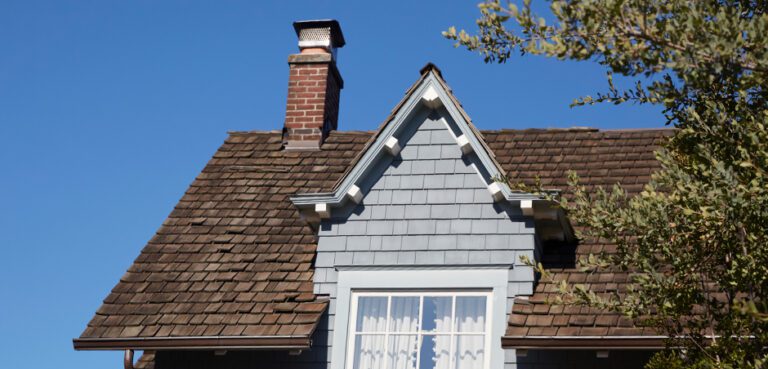How Do I Insure My Old Home?


Everyone loves a home with real character built right in, and they just aren’t built like they used to be. Older homes come with many unique quirks and designs that are not seen in modern buildings, making them appealing to many homebuyers. However, before diving into a beautiful older home purchase, many are left wondering, how do I insure it and what’s the difference from a newer home?
So Why the Fuss?
When it comes down to it, insuring older homes is considered more expensive. Insurance policies on older homes will vary from company to company, of course, as many factors are considered, including things like:
Home’s age. Sometimes homes must endure decades, even centuries, of wear and tear from being lived in and the environment around them.
Plumbing systems. Older plumbing systems were made using galvanized steel piping, these pipes are no longer used in home construction due to common rust issues leading to leaks and breaks.
Electrical wiring. Older electrical systems again use less common materials —such as older knob and tube wiring — that are not up to modern day codes. These can pose a fire risk and often are not run on the correct amps for current standards.
Roof age. Older roofs have been exposed to the elements for decades and materials often start to break down, this leads to leaks and poor insulation.
Materials used to build it. You’ve heard the saying, “things aren’t built like they used to be.” Well, that’s certainly true in this case. Building materials for older homes often included reclaimed wood, hand-painted windows, custom woodcarving and accents, antique doors, etc.
All of these play a significant role in assessing the insurance risk on the home. While the homes themselves were crafted using rare and hard to find materials, many of those materials aren’t up to today’s safety standards. These are all factors that make the possibility of a total loss (one requiring a lot more than just dwelling coverage) a very real, and costly, possibility.
What Can I Do?
That gorgeous, one of a kind old house is the home of your dreams, and you aren’t taking no for an answer. So, what can you do?
A big thing to consider when insuring your older home is to take note of any rare or expensive architectural elements in the home. In case of a total loss, this stock of the unique aspects of the home will help in any repair or rebuild. The cost of rebuilding a home is subject to the current market of the materials, and the rare or unique materials often found in older homes makes replacing them rather difficult and expensive.
Thankfully, insurance is not a one size fits all situation and here at ERIE we firmly believe policies should be as unique as the homes we are insuring. When it comes to insuring an older home, we would recommend you look into building a policy around the needs of the specific home, this is something that ERIE makes easy with our ErieSecure Home® bundles and select endorsement options.
ERIE Specific Options
When it comes to insuring the home of your dreams, we’ve got you covered, even with the older homes.
ERIE’s Extended Water endorsement1 is a great option to add to your home policy as it offers protection from backups of sewers, drains or floods, such as inland flooding, tidal water, storm surge or mudflow and mudslide. With flooding not being covered by most homeowners policies, this endorsement will bring peace of mind that you have coverage for:
Basements and other rooms that flood during a storm or various flooding events1
Water that backs up from sewers or drains (separate Water Backup endorsement required in North Carolina)
Repair or replacement costs for both your home and personal property2
Additional living costs associated with temporarily relocating while your home is being restored3
Flood avoidance reimbursement (up to $10,000) to help proactively protect your home before flooding occurs4
Additional coverage to consider for your older home would be Service Line Coverage5 which helps cover underground service lines such as cable, internet, gas, sewer and electrical lines. As well as ERIE’s Equipment Breakdown Coverage6 which will help add an extra layer of coverage for your heating and air conditioning, water heaters, appliances, home security systems, sump pumps, smart home technology and more.
Guaranteed Replacement Cost
A large factor that goes into insuring an older home is the cost of potentially replacing it if a total loss were to occur. Combine rare materials and systems possibly needing brought up to code, with a fluctuating market of post-pandemic building materials, and you have the potential for a rebuild that is significantly more expensive than dwelling coverage would allow.
Which is why ERIE offers Guaranteed Replacement Cost (GRC) coverage. GRC works to negate that fear of not having enough coverage if the terrifying possibility of needing to rebuild your home strikes. GRC works to ensure your home is rebuilt to the size and specifications7 that it was before, so you don’t have to sacrifice those custom shelves or gleaming wood floors.
At ERIE, we know that a house is more than just a foundation and some walls, it’s a home. It’s an extension of yourself and your family. It’s where you grow and learn. That’s why, regardless of age, we’re here to protect your home and bring you peace of mind. Make sure to contact us today to see how Erie Insurance can help you find the perfect policy for your unique home.
ERIE® insurance products and services are provided by one or more of the following insurers: Erie Insurance Exchange, Erie Insurance Company, Erie Insurance Property & Casualty Company, Flagship City Insurance Company and Erie Family Life Insurance Company (home offices: Erie, Pennsylvania) or Erie Insurance Company of New York (home office: Rochester, New York). The companies within the Erie Insurance Group are not licensed to operate in all states. Refer to the company licensure and states of operation information.
The insurance products and rates, if applicable, described in this blog are in effect as of January 2024 and may be changed at any time.
Insurance products are subject to terms, conditions and exclusions not described in this blog. The policy contains the specific details of the coverages, terms, conditions and exclusions.
The insurance products and services described in this blog are not offered in all states. ERIE life insurance and annuity products are not available in New York. ERIE Medicare supplement products are not available in the District of Columbia or New York. ERIE long term care products are not available in the District of Columbia and New York.
Eligibility will be determined at the time of application based upon applicable underwriting guidelines and rules in effect at that time.
Your ERIE agent can offer you practical guidance and answer questions you may have before you buy.

